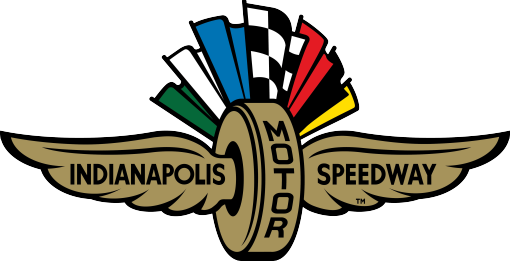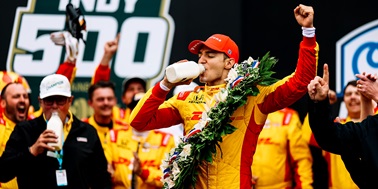Years before Indianapolis Motor Speedway became a multi-use motorsports facility, co-founder Carl Fisher envisioned a different kind of horsepower for the property.
As IMS celebrates Founders Day – the 113th anniversary of the founding of the Indianapolis Motor Speedway Corporation – on Sunday, March 20, it’s interesting to ponder Fisher’s plan for horse power.
Recently discovered letters written by Fisher in 1920 illustrate his desire to maximize Indiana’s summer weather with a sport other than automobile racing. To business partner James Allison and others, Fisher wrote of a plan to install a pair of polo fields accompanied by an assortment of barns and support buildings.
“The Indianapolis Motor Speedway is a perfect setting for polo playing,” wrote Fisher, a one-time bicycle racer and entrepreneur from Greensburg, Indiana. “We have enough ground to have a dozen good fields. A big part of the necessary equipment which other communities don’t have to purchase is already at hand, so that Indianapolis can jump into polo playing without delay and at a minimum expense, with the expectation of eventually having the most attractive grounds in the United States and (the) best equipment.”
The fields would be 400-by-900 feet, positioned north to south in the track’s infield, and Fisher reasoned they would require more than 40 truckloads of sand after the grass had been closely cut.
There would be a blacksmith shop along with a bridle and tack room, and barns for up to 60 horses, with 12 stalls each. Fisher estimated the cost of each building at $4,000 to $6,000.
Fisher saw the buildings as a practical investment.
“We should have at least two of these barns built this summer and if for any reason Polo is discontinued, these barns will be very handy for storing various materials – hay or other farm products,” he wrote.
Fisher wanted the barns located “a short distance west of the Aviation Sheds, leaving some room between the track and polo fields for airplane landings … in an emergency without danger.”
A 12-foot referee’s stand would be necessary, complete with a bell suspended from the center for calling time. Fisher also mentioned the need for a 40-foot-long hitch rack so the horses could be held in a location where they would not interfere with the use of the track. Small grandstands would be necessary, he wrote.
Fisher even had a trainer/coach in mind to lead the initiative: George Miller, described as one of the nation’s top riders, would bring 16 “ponies” from his ranch in Austin, Texas.
Practice time would be made available three days a week – Tuesdays, Thursdays and Saturdays from 3-5 p.m. – with matches held on two of those days. Beginning in 1921, marquee events featuring the best teams from Indianapolis and Dayton, Ohio, would be conducted on June 17 and June 19.
Fisher asked Allison to circulate a pamphlet “to the citizens of Indianapolis that this is the beginning of Polo in Indiana.”
The board of directors even went to the measure of appropriating $30,000 for the endeavor.
Fisher wanted to create a club – the Speedway Polo Club – initially comprised of 500 members entitled to two years of privileges. The cost for the non-transferrable membership would be $50, with family members allowed to attend the matches so long as they fit in one car. After those memberships were sold, another 700 would be available at $65. Annual dues would be $65.
Strong sales would allow for expansion of the program, he said, but the overall objective was to provide a revenue stream for the months following the Month of May.
“Just as the Indianapolis Five Hundred Mile Speedway Race is the greatest sporting event in the world it is our ambition to eventually bring to Indianapolis some of the International Polo contests, and if we have the proper support in this undertaking we will accomplish this result,” Fisher wrote.
The letters don’t explain what happened to the polo project, but soon after Fisher was on to another idea to keep IMS relevant in the summer months: The installation of a golf course and two swimming pools.
The original Speedway Golf Course was built in 1929 by new owner Eddie Rickenbacker and has undergone several renovations, with the current layout, known as the Brickyard Crossing, completed in 1993 by noted golf course designer Pete Dye. Doug Ford, the 1957 Masters champion, won the first two PGA events on “500” weekends in 1960 and ’61. A swimming pool was built in the parking lot of the Brickyard Motel, which opened in 1963 outside Turn 2.
In 1994, IMS began its diversification of motorsports activities with the first NASCAR race, the Brickyard 400. In later years, Formula One and MotoGP, plus additional second-tier racing divisions, were part of the annual calendar.




